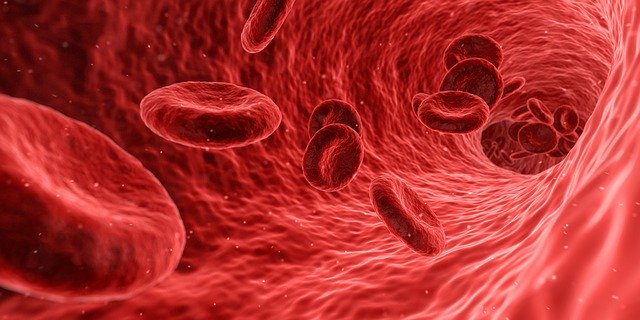
The cytoskeleton is an important and complex network of protein fibers and filaments within the cytoplasm of the cell. It is one of the characteristic structures of eukaryotic cells but not prokaryotes.
The cytoskeleton provides a structural framework for the cell. It helps with cell movement and the movement of cytoplasmic components during several processes such as endocytosis, phagocytosis and exocytosis.
There are three main components, the microfilaments, microtubules and intermediate filaments.
The Microfilaments
Microfilaments, also known as actin filaments, are another major component of the cytoskeleton. They are composed of the protein actin and are involved in cell movement, cell shape, and intracellular transport.
Like microtubules, microfilaments are dynamic structures that undergo rapid assembly and disassembly. Microfilaments are formed from the polymerization of actin monomers into long, thin filaments. The polymerization of actin monomers is regulated by several proteins, including profilin, cofilin, and tropomyosin.
Microfilaments play an important role in cell movement. They are responsible for the contraction of muscle cells and the movement of other types of cells, such as immune cells and cells in the developing embryo. Microfilaments also play a role in cell shape, providing a flexible and adaptable structure that can change shape in response to changes in the environment.
Intracellular transport is another function of microfilaments. They provide tracks for motor proteins, such as myosin, to move along, allowing cargo to be transported to different parts of the cell. Microfilaments are also involved in the formation of cell-cell junctions, which are structures that hold cells together and allow for communication between cells.
The Microtubules
Microtubules are one of the main components of the cytoskeleton and are composed of the protein tubulin. They are long, hollow, cylindrical structures that play important roles in cell division, intracellular transport, and cell shape. Microtubules are dynamic structures that undergo rapid assembly and disassembly, a process known as dynamic instability.
The microtubules are unique in that they are made of two alpha-tubulin and beta-tubulin proteins. As a structure they form a rigid hollow tube of tubulin dimers. These rods have a total external width of 25nm whilst the internal width is just 14 nm.
Their function is specifically to maintain cell shape by also providing a tension so that compression is resisted. They push the cell outward which prevents them being crushed. They also allow for the movement of chromosomes during cell division and also help keep organelles in position. They are also a component in flagella.
Microtubule assembly begins with the nucleation of a microtubule seed, which consists of a small ring of tubulin dimers. Additional tubulin dimers are then added to the seed, forming a protofilament. Protofilaments align side by side to form a sheet, which then rolls into a tube to form a microtubule.
Microtubules have a polarity, with one end referred to as the “plus” end and the other as the “minus” end. The plus end is the end where new tubulin subunits are added during assembly, and the minus end is where they are lost during disassembly. This asymmetry is important for the directionality of intracellular transport and cell division.
One important function of microtubules is to form the mitotic spindle during cell division. The mitotic spindle is a structure that separates the chromosomes into two daughter cells during mitosis. Microtubules are also involved in the formation and maintenance of cilia and flagella, which are hair-like structures that protrude from the surface of cells and are involved in movement.
In addition to their structural roles, microtubules are involved in intracellular transport. They provide tracks for motor proteins to move along, allowing cargo to be transported to different parts of the cell. Kinesins and dyneins are two types of motor proteins that move along microtubules.
Microtubules also play a role in cell shape. They provide a rigid structure that helps maintain the shape of the cell, and their dynamic properties allow for remodeling and reorganization of the cytoskeleton in response to changes in the environment.
The Intermediate Filaments
Intermediate filaments are a class of protein fibers that make up a third component of the cytoskeleton, along with microtubules and microfilaments. They are intermediate in size between microtubules and microfilaments and are generally less dynamic than either of these other types of cytoskeletal filaments. Intermediate filaments are composed of a diverse group of proteins that differ between cell types and tissues.
Unlike microtubules and microfilaments, intermediate filaments are not involved in cell division or intracellular transport. Instead, they are primarily responsible for providing mechanical strength and stability to cells and tissues. Intermediate filaments are particularly abundant in tissues that are subject to mechanical stress, such as skin, muscle, and blood vessels.
Intermediate filaments are formed by the polymerization of protein monomers into long, rope-like structures. The exact composition of these protein monomers varies between cell types and tissues. For example, the intermediate filaments found in skin cells are composed of keratin, while those found in muscle cells are composed of desmin and vimentin.
Intermediate filaments are characterized by their high degree of structural stability, which allows them to resist mechanical stress and provide support to cells and tissues. They are anchored to cell-cell junctions and the extracellular matrix, providing a strong and stable connection between cells and their environment.
Intermediate filaments also play a role in the maintenance of cellular shape and organization. They help to define the shape and structure of the cell, allowing cells to maintain their characteristic morphology and organization within tissues. Additionally, intermediate filaments are involved in the regulation of cellular signaling pathways, allowing cells to respond to extracellular signals and adjust their behavior accordingly.
Overall, intermediate filaments are an important component of the cytoskeleton that provide mechanical strength and stability to cells and tissues. While they are less dynamic than microtubules and microfilaments, they play an important role in defining cellular structure and organization.
Leave a Reply